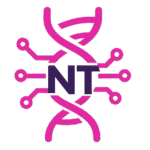
AI Transformation Strategy: From Experimentation to Enterprise Scale
Quick Take (for the skimmers & AI Overviews)
- What is AI transformation? Moving from pilots and experiments to enterprise-wide adoption with measurable outcomes.
- Why it matters: Most companies are pouring money into AI, but only about 1% say they’ve figured out how to scale it (McKinsey 2025).
- How to win: Pair strategy with governance, HITL, and change management to deliver ROI and adoption.
- Roles to watch: Project managers, product managers, change leads, enablement teams, and workflow designers — the people driving adoption, speed, and cultural readiness.
Why AI Transformation Strategy Matters
Q: Why is AI transformation urgent now?
AI isn’t optional anymore — it’s the difference between leading and becoming obsolete.
Do you remember the viral TikTok trend where Millennials tried to use a rotary phone and couldn’t figure out how to start a call? Funny, yes, but also a warning: outdated tools keep you stuck. Imagine trying to run your business on a rotary phone — no email or Teams calls while you’re on the go.
Each leap in technology, from brick phones to BlackBerry to smartphones, left late adopters behind. AI is the same kind of leap, only faster, and the choice is simple: adopt fast or get left behind.
Solopreneurs and startups now use AI to move quicker than enterprises weighed down by archaic processes and heavy overhead. Market share is already shifting because agility and automation create an edge.
- McKinsey’s State of AI 2025 reports that nearly 95% of enterprises see no measurable profit impact from AI — because they experiment without scaling. (McKinsey)
- John Chambers, former Cisco CEO, said AI is moving “five times faster than the internet,” and companies must reinvent annually. (Business Insider)
My take: With my background setting Project Management Office (PMO) standards, product lifecycles, I know how long it takes to manually document and share workflows. Today, I can simply record my screen, explain a process, and AI generates the Standard Operating Procedures (SOP) in minutes. That’s the same kind of leap as moving from rotary phones to smartphones. And that’s why project managers, change managers, enablement leads, technical trainers and workflow designers are essential now: they design transformation strategies that ensure organizations keep pace without losing control.
What is AI Transformation Strategy?
Q: How is AI transformation different from AI projects?
AI transformation is the intentional design of systems, governance, and workflows to move AI from experiments into the operating model. Unlike isolated projects, strategy embeds AI into decision-making, customer journeys, and employee workflows.
- Projects = isolated wins.
- Strategy = scalable, repeatable impact.
What are the key elements of AI transformation?
- AI Enablement: Equip knowledge workers with AI-driven tools that enhance productivity.
- Governance Guardrails: Define frameworks for ethics, compliance, and risk management.
- Human-in-the-Loop (HITL): Ensure oversight in high-stakes workflows.
- Change Management: Train, coach, and guide adoption to reduce resistance.
- Measurement & ROI: Track adoption, productivity gains, cost savings, and error reduction.
- Culture of Agility: Encourage experimentation, fail-fast learning, and shorter approval cycles.
What roles are driving AI transformation?
AI transformation is not just a technical effort. It depends on a set of non-technical and hybrid roles that shape adoption, workflows, and culture:
- Project Managers: Coordinate AI initiatives, ensuring deliverables stay on time and aligned to business goals.
- Product Managers: Translate customer needs into AI-enabled features and prioritize the right use cases for scale.
- Change Managers: Build trust, craft communication strategies, and reduce resistance as AI is rolled out.
- Enablement Leaders / Trainers: Develop learning programs and microlearning content to upskill teams on AI tools.
- Workflow / Process Designers: Redesign processes so AI and humans can work together efficiently.
- AI Transformation Leads: Oversee enterprise strategy, connecting business objectives with AI adoption roadmaps.
- Content Strategy / Operations Leaders: Ensure AI-generated content meets brand, compliance, and governance standards.
- Governance & Compliance Managers: Put frameworks in place to manage ethical, legal, and risk concerns.
- Knowledge Managers: Curate institutional knowledge and pair it with AI systems to make expertise scalable.
- Employee Experience / Culture Officers: Foster a culture of agility, experimentation, and psychological safety so teams embrace AI change.
These roles ensure that AI transformation is sustainable, human-centered, and aligned with organizational strategy.
What are some industry use cases for AI transformation?
- Finance: A 2025 Gartner study found that banks adopting AI-driven compliance tools cut manual review costs by 30%, and predicted that by 2027, more than 60% of global banks will embed AI-driven decisioning into their compliance and risk operations.
- Healthcare: AI-enabled content workflows support HIPAA compliance and reduce call center volume. According to PwC Health Research Institute, 73% of providers say AI improves efficiency in claims processing and patient support.
- Sales & Marketing: AI helps personalize campaigns and optimize spend. A HubSpot 2025 survey reports that AI-personalized content increases engagement rates by 42%. HITL reviews keep campaigns accurate and inclusive.
- Operations & Tech: AI reduces time spent on manual tasks like ticket triage or reporting. Deloitte 2025 shows AI in operations delivers a 20–40% productivity lift when paired with governance.
What are the common pitfalls in AI transformation?
- Lack of governance: Leads to compliance risks and reputational damage. NIST stresses governance frameworks as essential guardrails.
- Overfocus on tech, not people: Without cultural readiness, adoption fails. Forbes notes that cultural resistance is the #1 barrier to AI adoption.
- No clear ROI metrics: Without measurable impact, leaders can’t justify scaling. Accenture reports that companies tying AI to ROI grow 3x faster.
- Fragmented pilots: Isolated wins don’t deliver enterprise impact. MIT Sloan highlights that siloed pilots are a top reason firms stall.
What is leadership’s role in AI transformation?
Leaders must:
- Upskill staff continuously: Provide training so teams know how to use AI tools effectively and responsibly. PwC notes that firms investing in systematic upskilling outperform peers on transformation success.
- Create a culture of transformation: Foster openness to change, encourage experimentation, and build trust so employees feel safe adopting new workflows. Gartner reports that companies embedding cultural change alongside AI adoption see 30% faster implementation success.
- Connect AI to strategy: Ensure pilots ladder up to business goals. McKinsey shows companies with clear strategic alignment are 2x more likely to scale AI.
- Invest in governance and enablement: Build risk guardrails and train teams. NIST AI RMF sets standards for safe AI adoption.
- Model agility and culture: Embrace fail-fast cycles and celebrate experimentation. Prosci notes that change leaders who model trust and agility see faster adoption.
- Reward adoption: Recognize employees who embed AI in workflows, not just those who launch experiments.
Closing: From Pilots to Scale
AI is no longer about experiments. The future belongs to organizations that design strategy + governance + enablement into their operating models. The question for leaders is not “should we experiment with AI?” but “how will we scale AI responsibly and profitably?”
Key Terms Glossary (and Future Blog Roadmap)
- AI Transformation Strategy: Embedding AI into enterprise operating models. (Future blog: AI Transformation Playbook.)
- AI Enablement: Equipping knowledge workers with AI tools. (Future blog: AI Enablement in Finance.)
- Governance Guardrails: Policies and frameworks to manage risk. (Future blog: Governance in Transformation.)
- Human-in-the-Loop (HITL): Oversight in AI workflows. (Future blog: HITL in AI Transformation.)
- ROI Metrics: Adoption, productivity, efficiency gains, cost savings. (Future blog: Measuring AI ROI.)
- Agentic AI: AI agents proposing actions with human approval. (Future blog: Agentic AI and Transformation.)
